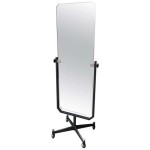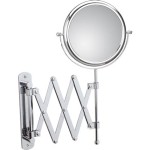How To Mirror Laptop Screen On TV With HDMI
Mirroring a laptop screen to a television via HDMI offers a larger display for various activities, from enjoying movies and photos to delivering presentations and enhancing productivity. This process is generally straightforward, though specific steps may vary slightly depending on the operating system and hardware involved.
1. Gather the Necessary Equipment
The essential hardware components for screen mirroring via HDMI are an HDMI cable and a laptop and television equipped with HDMI ports. HDMI cables are widely available in various lengths. Choosing a suitable length depends on the distance between the laptop and the television. Ensure both the laptop and the television are powered off before proceeding with any connections.
2. Connect the Laptop and TV
Locate the HDMI port on both the laptop and the back or side of the television. Insert one end of the HDMI cable into the laptop's HDMI port and the other end into the television's HDMI port. The ports are typically labeled "HDMI" and may be numbered if multiple ports are present. A secure connection is vital for optimal signal transfer.
3. Power On the Devices
After connecting the HDMI cable, power on the television first, and then power on the laptop. This sequence can help ensure proper recognition of the connection. Some devices may require adjustments to the television's input source.
4. Select the Correct HDMI Input on the TV
Most televisions have multiple HDMI input sources. Use the television's remote control to navigate to the input settings or source selection menu. Select the HDMI port corresponding to the one connected to the laptop. This selection is often labeled HDMI 1, HDMI 2, etc. The laptop's display should then be mirrored on the television screen.
5. Adjust Display Settings on the Laptop (Windows)
For Windows users, further display settings can be adjusted. Press the Windows key + P to open the "Project" menu. Several options are available: "PC screen only" disables the external display; "Duplicate" mirrors the laptop screen on the TV; "Extend" treats the TV as a second monitor, expanding the workspace; and "Second screen only" displays the output only on the TV.
6. Adjust Display Settings on the Laptop (macOS)
macOS users can adjust display settings by navigating to System Preferences, then Displays. The "Arrangement" tab allows configuration of mirroring or extending the display. Checking the "Mirror Displays" box will synchronize the laptop screen with the television.
7. Troubleshooting Common Issues
If the laptop screen does not appear on the television, several troubleshooting steps can be taken. First, double-check the HDMI cable connection on both devices to ensure they are firmly seated. Trying a different HDMI cable can rule out cable malfunction. Verifying the correct HDMI input source on the television is also crucial. Restarting both the laptop and the television can sometimes resolve connectivity issues. Updating graphics drivers on the laptop might be necessary in some cases. Consulting the laptop and television manuals for specific troubleshooting instructions is recommended if problems persist.
8. Optimizing the Display for Different Uses
Optimizing the display settings can enhance the viewing experience. For watching movies or playing games, adjusting the resolution and refresh rate on the laptop to match the television's capabilities is beneficial. For presentations or general productivity, adjusting the scaling and text size can improve readability on the larger screen. Access these settings through the display settings on the respective operating system.
9. Wireless Alternatives for Mirroring
While this article focuses on HDMI mirroring, wireless options such as Miracast and AirPlay are available for compatible devices. These wireless methods can provide more flexibility in terms of placement but may be susceptible to interference and latency issues. Choosing the best method depends on the specific needs and available technology.
10. Maintaining Cable Integrity
Proper cable management is crucial for maintaining the integrity of the HDMI cable. Avoid bending the cable excessively and keep it away from potential sources of damage. Regularly inspecting the cable for any signs of wear and tear can prevent connection problems. Storing the cable properly when not in use can prolong its lifespan.

Connecting Laptop To The Tv With Just A Few Simple Steps Resource Centre By Reliance Digital

How To Screen Mirror Stream Laptop Pc Tv Wireless No Adapters

How To Connect Mirror Laptop Screen On Any Smart Tv Wirelessly No App

Top 4 Ways To Connect And Mirror Laptop Smart Tv

Connecting Laptop To The Tv With Just A Few Simple Steps Resource Centre By Reliance Digital
How To Display Your Computer Screen On Tv Via Hdmi Sony

How To Mirror Laptop Screen Onto Tv Using Hdmi Easy

How To Connect Mirror Laptop Screen On Any Smart Tv Wirelessly Mirroring

Connect Laptop To Tv Our Best Tips Lenovo Us

How To Easily Connect Your Laptop Tv Asurion








